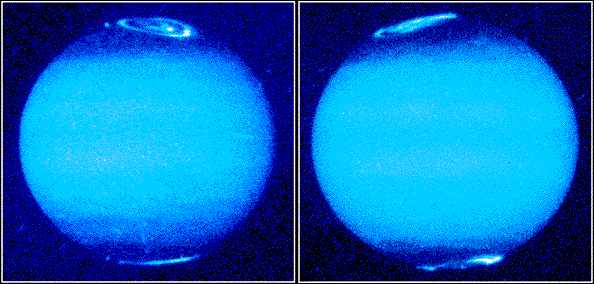Explanation: Auroras are especially large on Jupiter. In pictures released yesterday, the Hubble Space Telescope imaged these unusual light displays in more detail than ever before. Jupiter's auroras are linked to its volcanic moon Io. Io's volcanoes release particles, some of which become ionized, trapped by Jupiter's magnetic field, and rain down on the gas giant. The resulting auroral displays may be thousands of times brighter than any auroral display on Earth, and involve unusual spots. The above pictures show how the extended auroral emissions rotate with Jupiter, while the auroral spots stay synchronized to Io as it circles Jupiter.
1999 2000 2001 2002 2003 2004 2005 2006 2007 2008 2009 2010 2011 2012 2013 2014 2015 2016 2017 2018 2019 2020 2021 2022 2023 2024 2025 |
Yanvar' Fevral' Mart Aprel' Mai Iyun' Iyul' Avgust Sentyabr' Oktyabr' Noyabr' Dekabr' |
NASA Web Site Statements, Warnings, and Disclaimers
NASA Official: Jay Norris. Specific rights apply.
A service of: LHEA at NASA / GSFC
& Michigan Tech. U.
|
Publikacii s klyuchevymi slovami:
Jupiter - polyarnoe siyanie - vulkan - Io - Yupiter
Publikacii so slovami: Jupiter - polyarnoe siyanie - vulkan - Io - Yupiter | |
Sm. takzhe:
Vse publikacii na tu zhe temu >> | |
